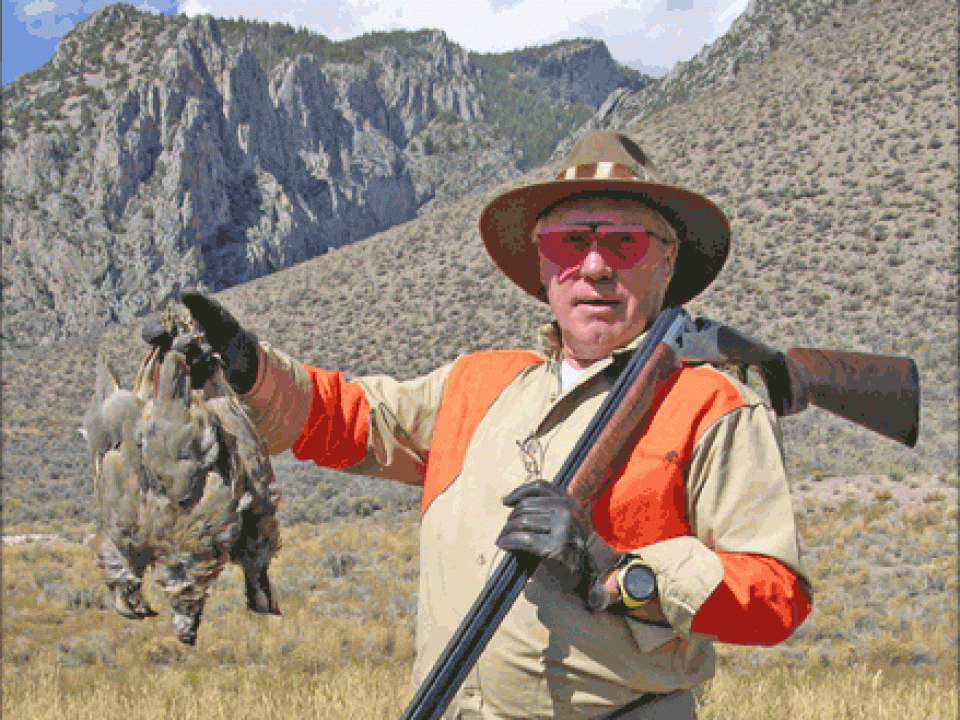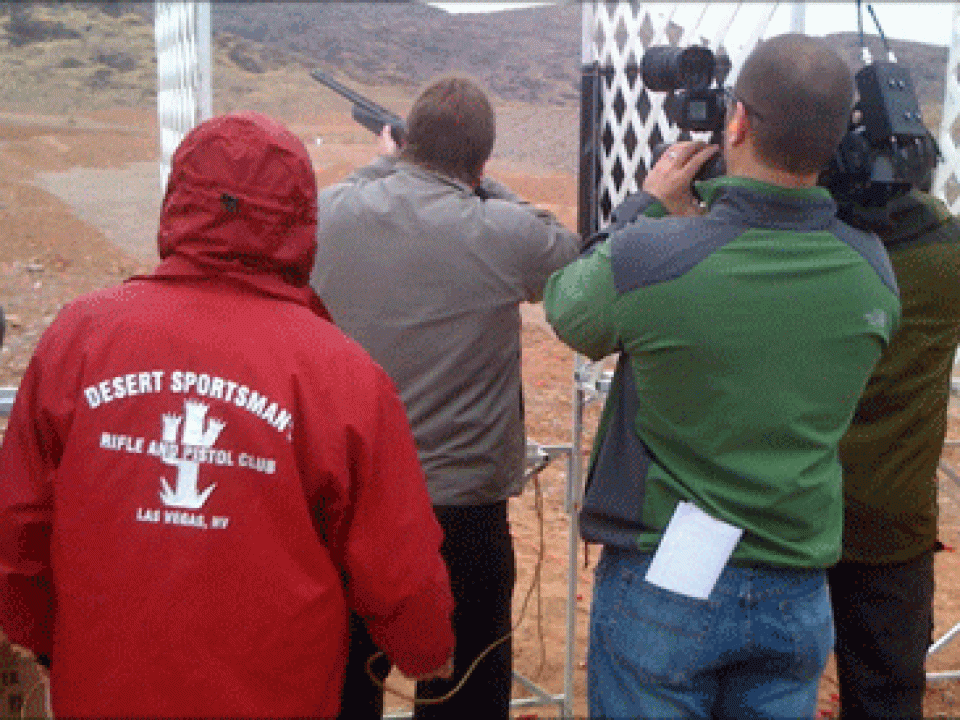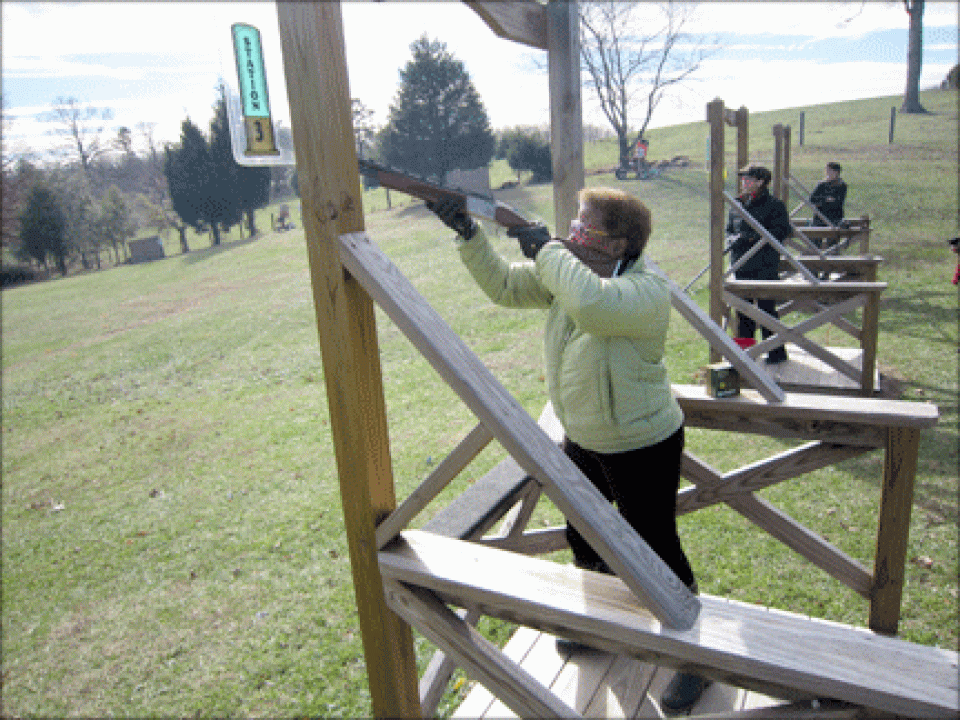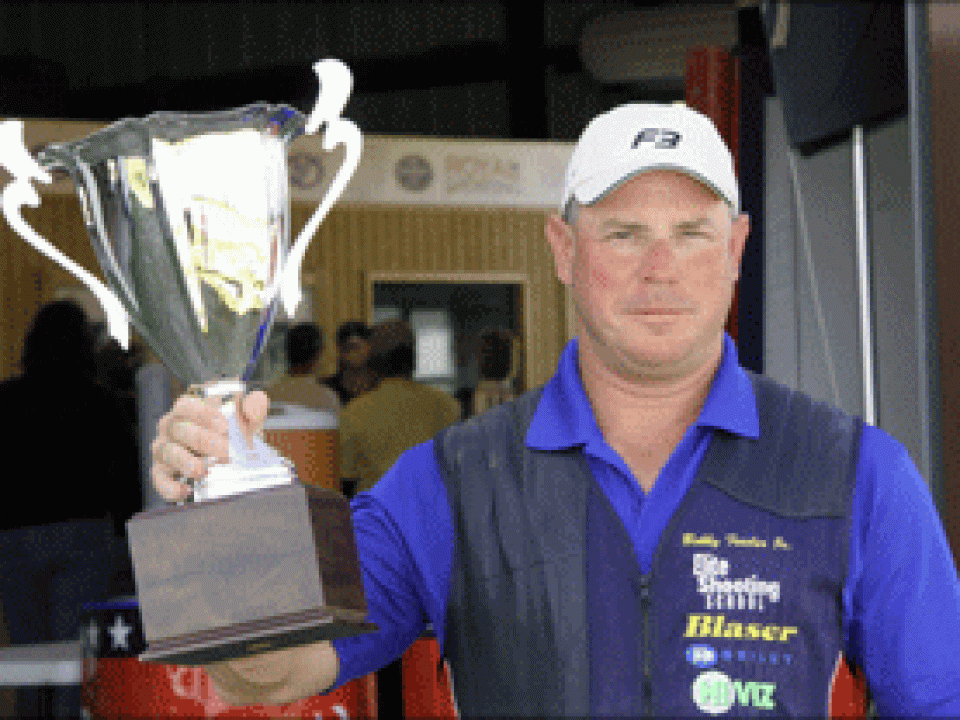Most shooters aren’t aware there is another shotshell manufacturer out there aside from the big four here in the United States. It’s RST and its has been around for a number of years. Their shotshells are manufactured in Friendsville, Pennsylvania, so they are not imported.
shooting
Up Close and Personal With the Newest Shotguns as the SHOT Show Returns to Las Vegas
Most people call it the SHOT Show. We think of it as Shotgun Candyland.
The Shooting, Hunting, Outdoor Trade Show and Conference (SHOT Show) is the largest and most comprehensive trade show for all professionals involved with the shooting sports and hunting industries. You’ll find plenty of so-called black guns for the tactical market, state-of-the-art bows, ammunition, a boatload of pistols and just about every conceivable gadget and gear on the planet for the hunting and shooting enthusiast as well as tools of the trade for the police and military.
The SHOT Show is also the best possible place to find shotguns for wing and clays shooting all under one roof. The giants of the industry such as Beretta, Browning, Winchester and Remington set aside sections in their massive exhibits for over/unders, semi-autos and side by sides.
They are accompanied by smaller companies with devoted followings such as Blaser, Fausti, Zoli, Ithaca, Caesar Guerini, Connecticut Shotgun, Benelli, Franchi, Stoeger and others.
The SHOT Show kicks off every year with Media Day. This gives the firearms press the opportunity to shoot just about every type of gun at a range. We flew in a day before the show actually started to participate in Media Day, giving us the opportunity to evaluate some new shotguns and perennial favorites. In a moment, we’ll share our impressions with you of a day on the range with these shotguns.
This year’s SHOT Show returned to Las Vegas from Orlando, where it was held in 2009. The SHOT Show packed the Sands Expo & Convention Center from January 19th through the 22nd.
The shows’ sponsor and owner, the National Shooting Sports Foundation, said that overall attendance reached 58,444, approaching the all-time record of the 2008 Las Vegas Show and approximately 11,000 more than last year’s show in Orlando. The 1,804 media professionals in attendance also set a new high. Exhibiting companies numbered 1,633 across some 700,000 net square feet in the convention center’s halls and the Venetian Hotel’s meeting rooms.
Whether you were on the show floor, the press room or the Media Day shooting ranges, you could hear languages spoken from Europe and Asia. At the Desert Sportsman’s Club, a group of reporters in front of me started speaking in German before switching to French when a fellow writer joined them.
The Desert Sportsman’s Club in Las Vegas hosted the 2010 New Product Event. Among the gun makers participating, we focused on shotguns provided by Browning and Winchester. About eight stands were lined up with some seven trap machines in what turned out to be a shooting free-for-all.

Winchester’s Super X3 Flanigan Exhibition/Sporting semi-auto just begged to be shot. With its candy-apple red receiver and matching forend cap contrasted against the black Dura-Touch Armor Coating, the 12 gauge simply dazzled.
Exhibition shooter Patrick Flanigan has set some speed records with a modified X3 so expectations ran high for performance. The shotgun proved to be fast, but for some inexplicable reason Winchester literally cut corners on the trigger blade. The sharp, perpendicular edges hurt your trigger finger and made the gun unpleasant to shoot. It was a far cry from the Blaser F3 28 gauge we’re currently testing, which has perfect ergonomics.
At $1,479, the X3 Flanigan Exhibition is about one-quarter the price of the Blaser F3. Still, there’s no excuse to fit a shotgun with a trigger that cuts into your finger.
We also shot Winchester’s Super X Pump Black Shadow. The action on this one was very smooth, but once again the trigger edges were angular. In addition to the trigger being painful, it was stiff and heavy – far more so than the prototype Ithaca Model 37 Waterfowl Model we had shot just a few days before on a sea-duck hunt (we’ll give you the exclusive story on that shotgun shortly).
After the two Winchester shotguns we moved on to the Brownings.

We tried the Browning Maxus semi-auto. Introduced last year as the world’s most reliable shotgun, the two 12-gauge versions we shot both jammed on the second shot. One of them featured the Mossy Oak finish, while the other was black. We certainly would have expected more.
Next, we shot the Browning 12-gauge 625 Citori over/under. It delivered on Browning’s reputation for quality and value. The shotgun had low recoil and a good finish. The 625 felt solid, the way Brownings are supposed to, and the gun shot well.
We picked up a .410 version of the 625. It proved to be a stunning clays crusher. Weighing slightly over 7 pounds, it delivered the handling of a bigger bore shotgun with the sheer exhilaration you can only get from a .410.

Our favorite shotgun at the Desert Sportsman’s Club, however, turned out to be a 28-gauge Browning Cynergy Classic. From an aesthetics perspective, we always did like the angled lines of the Cynergy receiver where it meets the stock. Plus the Cynergy receiver has a much lower profile than the Citori. Overall, it’s a more elegant, modern looking shotgun. This 28-gauge was extremely accurate – allowing us to break the targets and many of the pieces. With a suggested retail price of $3,509, you would be hard-pressed to find a better 28 gauge for the money.
Next stop was the Boulder City Rifle and Pistol Range for Bass Pro Shops’ Media Day. Nearly every type of gun was available to the press, but we made a bee line to the shooting ranges of Blaser, Ithaca and Beretta.
Just for kicks, Blaser gave demonstrations of a muzzle loader, which broke targets with authority.
Beretta let us shoot a 12-gauge SV-10 Prevail. This handsome over/under benefits from state-of-the-art innovation that touches everything from the extractors to the hinges to the Kick Off anti-recoil on the butt of the stock. Once we located the point of impact and relaxed into the SV-10 Prevail, the gun proved nimble and easy to shoot, but we were disappointed in that it was difficult to crack open. These guns retail for about $3,000 and we can only assume opening the gun becomes easier over time. Otherwise, it would be a real challenge to buy a more advanced over/under at that price.

Also available to shoot was Beretta’s latest semi-auto, the A400 Xplor Unico, 12 gauge with the Kick Off recoil-reduction system. Officially unveiled at the SHOT Show, this gun is distinguished by the Unico chamber, which reliably accepts shells ranging in length from 2 ¾ to 3 ½ inches. The rotating bolt with reinforced lugs is flexible enough to manage the different shells while at the same time reduces time between cleanings and improving cycling time by some 30 percent. Weighing in at a scant 6½ pounds, it’s among the lightest semi-auto on the markets.
We found that we had to float the targets over the front bead to break the outgoers thrown from the single trap machine. The Kick Off worked as advertised, especially given the shotgun’s bantam weight. The A400 Xplor Unico shouldered fast and handled well. Priced at $1,725, it’s about $500 less than Beretta’s preceding flagship semi-auto, the 391 Technys Gold Sporting.
We wrapped up our Media Day shooting with the extraordinary Ithaca 12-gauge over/under Phoenix. The last time we shot it, the gun was in the prototype stage and we declared it the softest shooting 12-gauge over/under on the planet. Now several months later, the Phoenix was even tighter. The latest iteration of the gun shot so straight I’m convinced that even a blind folded shooter could crush targets with it. The Phoenix is in the final stages of refinement and we could see the first models come out of the factory this summer. If you’re interested, get your deposit in early because the Phoenix is already back-ordered.
Shotgun manufacturers took the opportunity to introduce several new models at the SHOT Show.
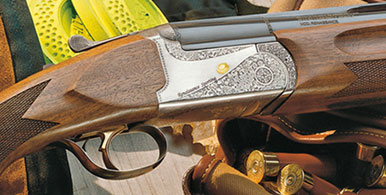
Franchi brought out a Renaissance Sport over/under in a 20-gauge. The coin-finished receiver includes ornate scroll work while the oil-finished stock is made of A Grade walnut. The suggested retail price is $2,349.
Winchester introduced the Walnut SX3 20 gauge at a starting price of $1,199. The All-Purpose Field model in 12 gauge is now available with a new Mossy Oak Break-Up Infinity Camo finish for $1,469.
CZ USA, the American arm of the Czech gun maker, brought out a new ultralight 12-gauge over/under called the Upland Ultralight. Its light alloy receiver brings down the weight to 6 pounds – 2 pounds lighter than the steel-frame versions. The new shotgun starts at $749.
Weatherby expanded its SA-08 line with two new models: the Deluxe and Waterfowler. The Deluxe features a high-gloss walnut stock and blued metalwork. It’s available in both 12- and 20-gauges models for $739. The Waterfowler has a camo synthetic stock and is only available in 12 gauge. It sells for $699.
We’re already looking forward to next year’s SHOT Show, to be held at the same venue on January 18-21. Stay tuned.
Irwin Greenstein is the Publisher of Shotgun Life. You can contact him at contact@shotgunlife.com.
Useful Resources
{loadposition signup}
.410 Fun With a Lovely Browning Citori
On the used gun market the most valuable, discontinued Browning – the Superposed over and unders – are those in 28 gauge. But .410 Superposed over and unders are not far behind in price.
Interestingly, there were more .410s produced in the Superposed than in 28 gauge. Further, the most valuable of the Superposed guns are the higher grades. There were quite a number of different higher grade Superposed over and unders, but we know them best as the Pigeon, the Pointer, the Diana and the Midas – with the Grade I being the lowest priced of these guns. Even the Grade I owned was very nice with its deep-cut engraving. But if you have a 28 or a .410 in Pigeon, Pointer, Diana or Midas Grade you certainly have a shotgun that’s worth plenty.
So I’m wondering if the Citori over and unders, especially those in the higher grades and in the smaller gauges, are destined to increase in value over time. The high-grade Citoris being offered by Browning are currently the Grade IV and the Grade VII. Like the 20, 28 and .410 Superposed, the small gauge Citoris are built on a 20-gauge frame. The Citori I’ve been shooting up a figurative storm with is the .410 Citori Grade VII with 28-inch barrels. More about shooting that gun shortly.
The three small-gauge Grade IVs are intricately engraved – including game scenes of flushing quail on the left side of the receiver, a flushing ruffed grouse on the right. To my eye this engraving is extremely well executed.
The Grade VII is also intricately engraved all around the game scenes – with three flushing grouse in gold on the left of the receiver, three flushing quail in gold on the right. The birds are well rendered, but it’s all the surrounding engraving that really catches my eye.
On the head of a pointer in gold on the bottom of these receivers, that gold head is surrounded by one heck of a lot of very intricate engraving. There’s also intricate engraving on the fore-end iron, the barrel “wings,” the receiver fences, the opening lever, top tang and trigger guard. This isn’t “just” engraving, as it’s very intricate and special, and the workmanship makes me wonder what these guns are going to be worth 60 – 80 years from now.
I realize (and probably so do you) that most of today’s engraving starts out with some type of chemical or etching process, but then that resultant engraving is worked on extensively by hand – by experts. For most of us, the days are over for real hand engraving with no help from acids, chemicals or whatever.
If a master engraver works for four months engraving one gun he is probably going to want about $40,000 – and that’s just for the engraving. The price of the gun itself is not included. So I’m guessing that the only shooter who can afford $40,000 worth of engraving has to make about $400,000 in four months. Along those same lines, if it takes a master engraver a year to make a super fine piece he’s going to want about $100,000 these days. The only folks able to afford that much money certainly have to make two million a year or more. That’s why I say true hand engraving has gone beyond most of us.
However, the engraving on production shotguns these days is sometimes outstanding – at least on some of the shotguns I’ve examined over the last several years. Today’s Grade VII Brownings are engraved so well that anyone examining these guns will be very impressed.
The Citori Grade VII .410 I have been shooting is the Lightning. Of all the various Citori models the Lightning is my favorite. I no doubt favor this model because of the stock’s lines – the semi-open pistol grip and the Lightning-style fore-end – which is rounded on the end.
The name “Lightning” and the style of the stock were stolen from the Superposed Lightning model. Browning was very wise to put this model in the Citori line as the Superposed Lightning was not only one of the best sellers – the Superposed Lightning is also very much sought after in the used market.
With the Grade VII you obviously get a very nice piece of walnut for the stock and fore-end. Further, the checkering is not only perfectly done – it’s tight at 20 lines-to-the-inch. The trigger is gold plated. In all three small gauges the Lightning wears a plastic butt pad so you will never have any gun mounting problems due to a sticky pad. The vent rib sits reasonably high, a good thing for hopefully preventing too much head lifting at trigger-pulling time. That rib is slightly tapered on the small gauge guns – .270 at the breech – .245 at the muzzle. Three screw chokes are included in all three gauges (even the .410): improved cylinder, modified and full. Also, it would be nice if Browning supplied at least one, preferably two, skeet chokes.
Because of the 20-gauge receiver, this Grade VII Lightning .410 is lightweight It weighed in at 7 pounds, 2½ ounces with 28-inch barrels (26-inch barrels are also available).
With my Baker Barrel Reader I measured the top barrel at .411, the bottom at .410. The improved cylinder measured .405, the modified .400 and the full went .395. The fore-end weighed 14.9 ounces and the barrels, 2 pounds 15 ounces.
Using my Shotgun Combo Gauge I measured the length of pull at 14 3/8 inches, the drop at comb 1½ inches, the drop at heel at 2 ¼ inches, and the gun balanced right on the hinge pin.
While serious competition skeet and sporting are great (I know a lot of you don’t shoot competition) just shooting for the fun of it is what I do these days. Accordingly, I have never met a real shooter who did not love shooting the .410. With that gun’s minimal recoil and impressive breaks at short ranges – using the proper chokes – what’s not to love about shooting a .410?
Although all the Lightning model .410s have 3-inch chambers (great for hunting), my clay target fun has been with the 2 ½-inch, ½-ounce rounds. For this shooting the Grade VII is pure joy, plus the 28-inch barrels swing well; and because of the 20-gauge receiver and the gun’s resultant weight of 7 pounds 2½ ounces there’s essentially no recoil at all.
The .410s that are really light, like under 5 pounds or a bit over 5 pounds, have more recoil than with this heavier Browning. Not that the recoil is bad in a 5 ½ pound, .410 shooting 2 ½-inch shells; it’s just that the recoil is even less with this Browning I’ve been having fun with. Another benefit to the heavier .410 is that this Browning .410 swings great compared to a 5 ½ pound .410.
To simulate upland bird flushes – the likes of ruffed grouse, woodcock and quail – I do a lot of this fun practice shooting from a low-gun position on stations six and two on a skeet field. These quartering away targets are often seen in hunting situations. But I also shoot plenty of low seven and low five targets, which also simulate certain upland bird shots.
Despite opinions by some, the .410 can be a good hunting gun as long as the shooter restricts the range. When I hunt with a .410 I go to the 3-inch shells. In addition to close-flushing upland birds, the .410 is also ideal for dove shooting, especially if the birds can be shot within the .410’s comfort zone. To simulate practice for this gunning I like to call for the bird from a low gun position, taking quartering incomers from stations one, two, six and seven, and full crossing shots from stations three, four and five.
Is this Grade VII Citori a shotgun that will gain in value as the decades pass by? There’s no guarantee of that, just the guarantee of one heck of a lot of shooting fun – speculative financial hopes be darned. With a suggested retail $5,109, this .410 is great fun to shoot today and could make for a lasting heirloom.
Nick Sisley has been a full-time freelance outdoor writer since 1969. He writes a regular shotgun column in Wildfowl magazine, Sporting Clays magazine, the Skeet Shooting Review and others. He’s authored eight books and penned thousands of magazine articles. He can be contacted at nicksisley@hotmail.com.
Helpful resources:
{loadposition signup}
GRITS with Grace
“Focus, movement, faith.” These are the words Elizabeth Lanier whispered in Sophie’s ear just before she called pull and crushed her clay target. Sophie had received a Beretta 28 gauge for her Mother’s Day present this year, and at the age of 72 and began taking shooting lessons with Elizabeth.
Blue Creek Sport Shooting Complex and Preserve
Montana’s newest sporting clays facility is up and running in less than a year. Jim Bailey, owner and general manager is in the construction business and had planned to use the land for an upscale home development, and had started to do that when the housing market went south. He then gave a lot of thought to how else to utilize the land for a profitable return since he already had done some work in developing roads, etc. After some discussion with some friends he decided to develop a sport shooting complex.
Casa de Campo
Story and photos by Jerry Sinkovec
Casa de Campo has a distant sounding ring to it, but it can be as close as three hours away or less. It’s located on the south shore of the Dominican Republic outside the town of La Romana which also has an International airport. Atlanta, New York and Miami are three of the major jumping off places.
Casa de Campo features what any Caribbean destination resort has to offer and much, much more on their 7,000 acres. They have three award-winning golf courses like Teeth of the Dog, which is world renown, and it has spectacular views of the sea and surrounding terrain. The management at Casa de Campo is currently finishing a $20-million-dollar renovation to create 78 new Elite rooms and suites, along with a new, contemporary main hotel area.
Over the years I’ve heard about and seen articles on Casa de Campo and I was impressed with what they had to offer. Now, I’ve had a chance to experience the resort. They have the world’s largest sporting clays facilities with over 200 stations and the tallest tower in the world. At 110 feet, it throws targets in all four directions from three different levels. They also have three lower towers on site. In addition, they have three trap fields; one for regular and handicap; one for trap doubles; and one for wobble trap. They also have a single skeet field and two Barnaby pigeon rings.
Since I didn’t have my own gun with me because I flew into Santo Domingo (for the shorter time in the air and the nicer terminals), so I used one of their Berettas. They have a large selection of shotguns you can use and they are primarily 12-gauge Beretta field guns with a manual safety. They also have guns in the four different gauges. I decided to shoot a couple of rounds of skeet to see how their Berettas would handle. The barrels felt a little heavier than my Browning, but the gun seemed to handle about the same. I only dropped a few targets so it wasn’t bad. The distant horizon was great for seeing the targets on the skeet field as well as the trap fields.
If you want to bring your own gun it can be easily done by filling out a gun permit two weeks before you depart and fly directly into the Casa de Campo/La Romana Intl. Airport (code: LRM) where the resort has good working relations with the authorities. You may encounter problems at the other two airports at Santo Domingo and Punta Cana, which are both about 90 minutes away.
The following day I went out with Shaun Snell, the manager of the shooting complex, to shoot the sporting clays field. I let him pick out the stations and I went after the different presentations. There was a nice selection of targets with what I would call normal type presentations All of them were doable, but I still could miss one now and then. It was fun shooting incomers from one of the two grouse butts on the course. I found the presentations off the top of the tower the most difficult, never having seen targets like that. They were so fast that you couldn’t pick them up until they were about 10 to 15 yards out and had slowed a bit. Be prepared for the unexpected and a good amount of fun. The next time I go back I hope to shoot all 200 plus stations.
You could spend 14 days there shooting 14 stations each day and you would not have shot all the sporting clay stations they have to offer. There is a great diversity in the presentations, which will challenge you as hard as you’d like to be challenged. Some stations are on the soft side and are used for instruction.
In years past the shooting focused on sporting clays, trap and live bird shooting with top competitors coming from Europe and South America. Some of the live bird competitions are still held there but not with the same frequency of years past. Over the years things have changed as has the interest in the different disciplines. Seven years ago Shaun, who is from England, took over the management of the shooting complex and started to make some changes. They have a clubhouse where the pro shop and office are located along with the Safari Club restaurant and bar. It’s a great place to relax with a soothing drink after a day of shooting or hunting.
Under Shaun’s management the focus has turned to upland bird hunting and waterfowl hunting. Casa de Campo is the only place on earth where you can do bird hunting 365 days a year. There are no licenses to buy, no bird limits, just great outdoor experiences. They have over 10,000 acres devoted to hunting upland birds and waterfowl. They have developed their own kennels and have an active breeding program which is operated by Shaun’s wife. The dogs that were used during our upland bird hunt were outstanding with pointers locating the birds and other dogs to flush them out.
Our upland hunt started after lunch on an average day. It was warm but pleasant and included about a 40 minute drive to the hunting property. The dogs were excited and anxious to get to their task. The terrain was on the flat side with some low hills and gullies and grass that was a little higher than normal. There were pockets of thick brush throughout the area that provided great cover for the birds. It wasn’t long before one of the dogs was on point. Another dog was released that flushed the birds and three partridge were flushed. With two guns shooting all three partridge were taken. Over the next few hours we were able to get 51 birds that included quail, partridge and pheasant. It was an exciting time with some great hunting and dogs that really knew their stuff.
The following day we went out early in the morning to the area where the duck hunting took place in lush terrain with many ponds and streams and bigger hills. Some small blinds were set up for the three shooters. It wasn’t long before ducks came over the hill to land in the pond behind us. At first it was one, two or three birds, but later the ducks came over in larger groups. The shooting was fast and furious and by the end of the morning each shooter had about 48 birds.
The largest shoot they have at Casa de Compo is the Sugar Invitational. It is a private shoot that takes place in April. Every year there are some changes to the format as it includes a few hundred clay targets and live bird shooting in different events. The shoot is normally conducted over four days. (For more information on events at Casa de Campo you can contact Shaun at the shooting center at 809-523-3333 ext. 5145.)
The accommodations at Casa de Campo vary from large villa homes to a variety of hotel rooms including the new Elite room and suites, with all the amenities of a large resort. My hotel room was larger than most hotel rooms and comfortable and had a covered balcony on the back side with nice views. Although my room wasn’t one of the newly remolded rooms it was more than ample and came with a well-stocked mini bar and great air-conditioning.
The Ivory colored sand beaches and palm trees are just beautiful. Since I was pretty busy on this trip, I only had one afternoon to spend at Minitas Beach to soak up the solar BTU’s and sip on a few margaritas. It was glorious. This resort covers 7,000 acres and so each room is provided with a golf cart to get around in. And it is really handy.
There are many other things to do at Casa de Campo. They have over a dozen tennis courts and several of them are lighted for play in the evening. The courts looked new, but it’s just that they are so meticulous in their maintenance. The La Terraza Tennis Center has been dubbed the “Wimbledon of the Caribbean.” At the equestrian center you can ride out on a large selection of trails on either an English or western saddles, but if you want to ride make sure you bring long pants. I didn’t so I couldn’t ride. Less than 100 yards from the stable is a polo field where a match was taking place the day I was there. I had fun capturing some action shots of the game.
There are other activities at Casa de Campo as well. There is deep-sea fishing, sailing, kayaking along with snorkeling and diving as well. You can also take an excursion or one of the many tours available or just rent an ATV and explore on your own. There are also spas where you can relax or get a massage which I did and felt totally renewed. They also have a fitness center where you can work out like you normally would at home and stay in shape after eating all those grand meals every evening. You can also rent a bike if that is more to your liking for staying in shape.
The nine restaurants in the resort’s inclusive package are simply great, with one of them being in the five- diamond class. At the restaurant at the Marina my dining partner and I ordered a large Man-O-War, about 20 inches in length and eight across, with its decks awash with sushi, sashimi, wasabi, sliced ginger and other delights. I never thought we’d finish it off, but we did such a grand job of clearing the decks, any good admiral would have been proud of our efforts.
My favorite appetizer that was available at two different restaurants and prepared a little different at each restaurant was tuna tartar. I had it just about every night. The restaurant that would easily win a five-diamond award is Le Cirque, which is located by the beach. The food there was really outstanding as was their selection of wines. The ambience of the restaurant was superior to what you would normally expect. And you could look out over the beach and barely hear the surf pounding on the shore.
Whatever your taste in food is you’ll find something there to suit you. And there will soon be the new La Cana Restaurant and Lounge by Il Circo in the main area too. There are art galleries and a museum on the property along with its own large shopping area. You can also visit and explore Altos de Chavon, an area where everything has the look of a few hundred years ago that also has some shops and restaurants on the Casa de Campo property. You’ll feel at home even though you’re away from home at Casa de Campo, because of the great staff.
Jerry Sinkovec is a freelance outdoor and travel photojournalist who writes for over 45 different publications nationally and internationally. Jerry is also designing shooting clothing and accessories for Wild Hare Intl. He is the shooting and travel editor for Outdoors Now. He is also the director of the Instinctive Target Interception Shotgun Shooting School headquartered in Idaho Falls, Idaho. He has been teaching for the last 20 years, and has been endorsed by Browning in Utah. He conducts classes in all the western states. His address is: I. T. I. Shotgun Shooting School, 5045 Brennan Bend, Idaho Falls, ID 83401. He can be reached at: 208-523-1545, or online at itishooting@msn.com or http://www.itishooting.com.
For more information on Casa de Campo you can contact:
Casa de Campo Direct
P.O. Box 140, La Romana, Dominican Republic
Phone 800-877-3643 or (809) 523-8698
E-mail: res1@ccampo.com.do Web site: http://www.casadecampo.com.do
Shotguns Up: Sporting Clays According to Bobby Fowler, Jr.
Common wisdom says one thing, Bobby Fowler Jr.’s trophy case says another.
Since he first started shooting competitively in 1993, Fowler has won about 150 titles in sporting clays and FITASC. He’s dominated the sports so thoroughly, that his middle initials should be HOA. Every gauge, on both sides of the Atlantic, in his home state of Texas – no tournament is safe from Fowler’s monumental skills in achieving the highest overall average.
Traditional English Driven Shoots Come to the Big Hole Mountains of Idaho
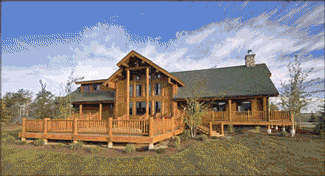
Here at an altitude of 6,000 feet, the aromas of pine trees, sage brush and spent Holland & Holland shells mingle together in the Big Hole Mountains of Idaho where Lars Magnusson has introduced traditional English driven shoots on American soil.
Combat to Clays: A Woman’s Journey
When I left theFBIAcademyafter sixteen weeks of training in 1986, I was covered in the most beautiful shades of purple, green, and yellow from my face to my collarbone, and down my bicep. The shotgun was too long, and my long neck and high cheekbones made it impossible to mount the gun properly to my shoulder while maintaining a proper sight picture (which is critical to defensive shotgun shooting). I lifted my face off the gun while shooting creating a horrible flinch, and all of the bad habits that ensue when shooting an ill-fitted gun followed suit. I was convinced that no one had ever hated a shotgun like I did in my bruised and frustrated condition.
Clays Shooting Bliss at Seven Springs
How about a big, juicy Beretta Burger?
Or maybe a spicy Krieghoff Crabcake Sandwich is more to your liking.
Want something with a little more roughage? You can always order the Shotgun House Salad with lots of greens and homemade dressing.
These are some of the menu selections from The Grille at the Sporting Clays Lodge of the Seven Springs Mountain Lodge in Seven Springs, Pennsylvania. You can chow down in the classic chalet setting or grab a table on the 7,000-square-foot deck with a dazzling view of the valley below.
Shotgun Life Newsletters
Join an elite group of readers who receive their FREE e-letter every week from Shotgun Life. These readers gain a competitive advantage from the valuable advice delivered directly to their inbox. You'll discover ways to improve your shooting, learn about the best new products and how to easily maintain your shotgun so it's always reliable. If you strive to be a better shooter, then our FREE e-letters are for you.
About Shotgun Life
Shotgun Life is the first online magazine devoted to the great people who participate in the shotgun sports.
Our goal is to provide you with the best coverage in wing and clays shooting. That includes places to shoot, ways to improve your shooting and the latest new products. Everything you need to know about the shotgun sports is a mouse-click away.
Contact
Irwin Greenstein
Publisher
Shotgun Life
PO Box 6423
Thomasville, GA 31758
Phone: 229-236-1632

